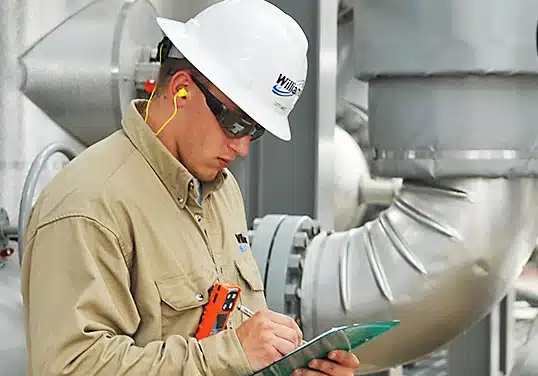In-service weld inspection is a process used to check the condition and quality of welds while the equipment or structure is still in use. In-service weld inspection is crucial for maintaining the safety and reliability of structures and equipment. Various methods, each with its own tools and techniques, to find and identify defects in welds before they become serious problems.
Methods of In-Service Weld Inspection
1. Visual Inspection:
• What It Is: Inspectors look at the welds with their eyes or using a magnifying glass.
• What It Finds: Surface defects like cracks, porosity (small holes), and incorrect weld shapes.
• Tools: Flashlights, magnifying glasses, and sometimes borescopes (tiny cameras on flexible tubes).
2. Ultrasonic Testing (UT):
• What It Is: Uses high-frequency sound waves to detect internal defects.
• How It Works: Sound waves are sent into the weld, and the way they bounce back can show if there are any hidden cracks or voids.
• Tools: Ultrasonic probes and monitors.
3. Radiographic Testing (RT):
• What It Is: Similar to taking an X-ray of the weld.
• How It Works: X-rays or gamma rays are passed through the weld and captured on film or a digital detector. Defects appear as dark spots on the image.
• Tools: X-ray or gamma ray sources and detectors or film.
4. Magnetic Particle Testing (MT):
• What It Is: Uses magnetic fields to find surface and slightly subsurface defects.
• How It Works: The weld is magnetized, and iron particles are applied. These particles gather at areas where there are cracks or other surface discontinuities.
• Tools: Magnets or electromagnets and iron particle powder or liquid.
5. Dye Penetrant Testing (PT):
• What It Is: Uses a colored dye to find surface defects.
• How It Works: A dye is applied to the surface of the weld and seeps into any cracks. Excess dye is cleaned off, and a developer is applied, which makes the dye in the cracks visible.
• Tools: Dye, cleaner, and developer sprays.

